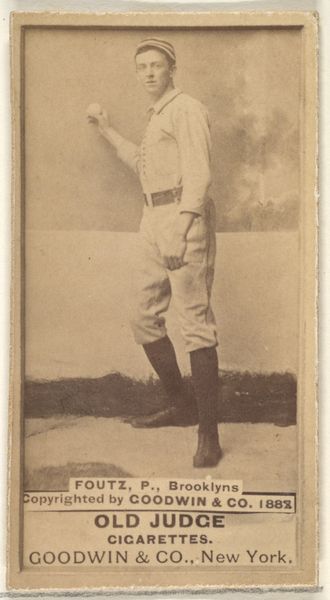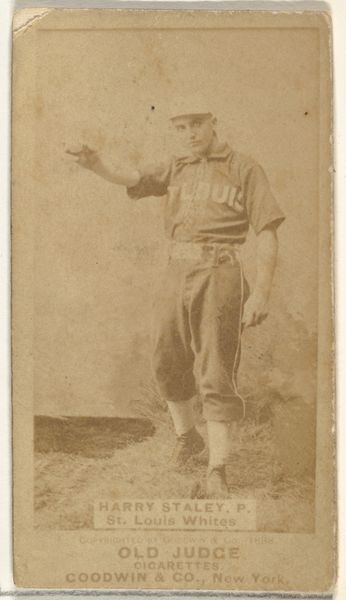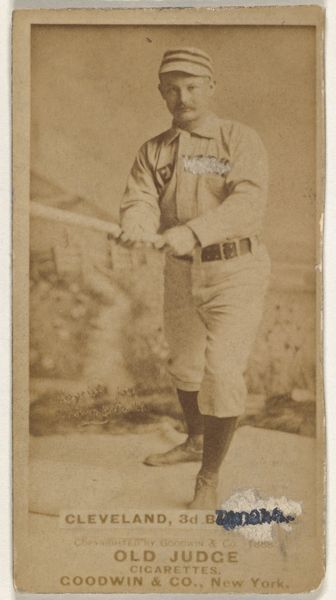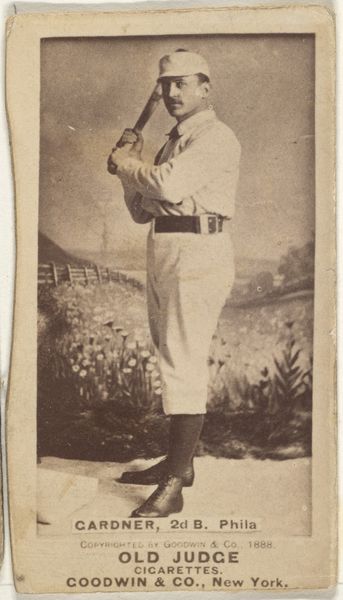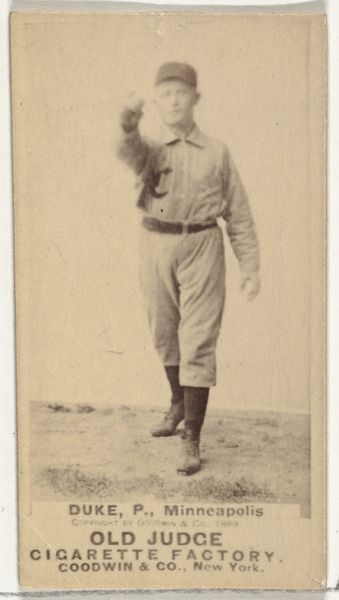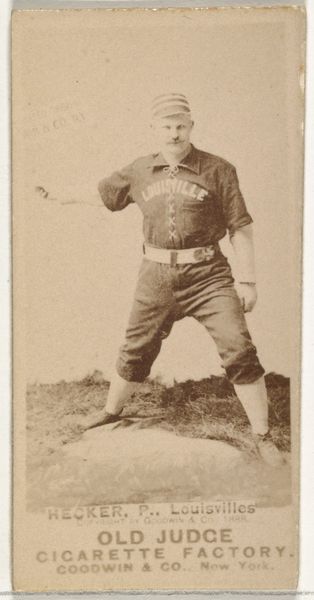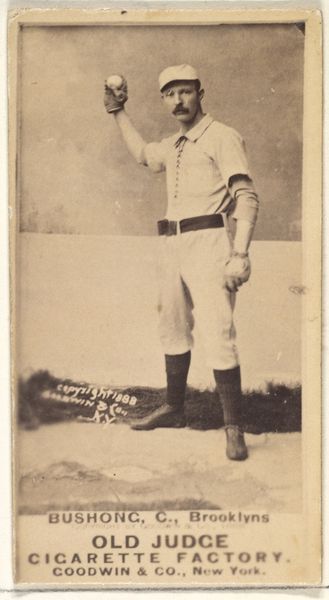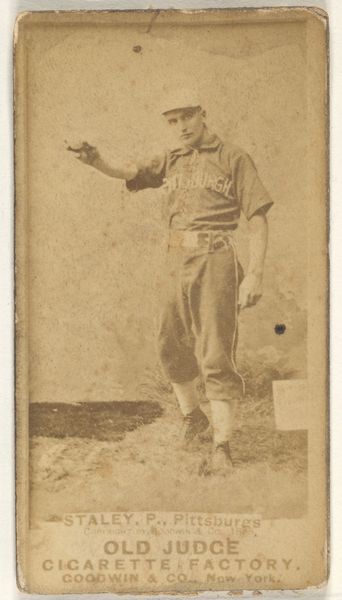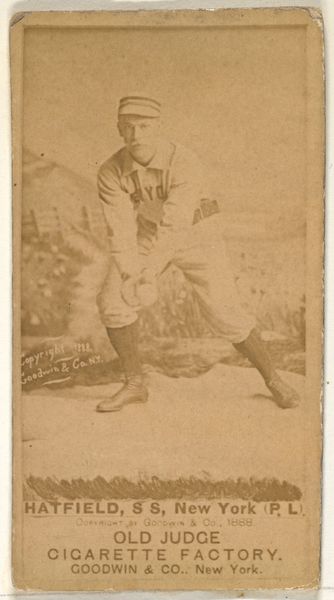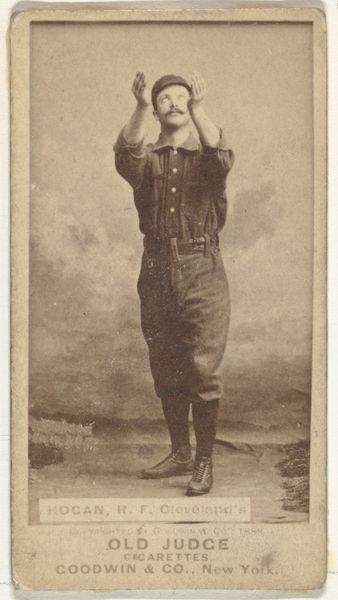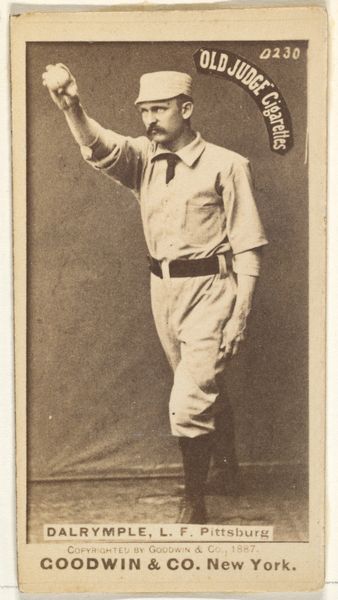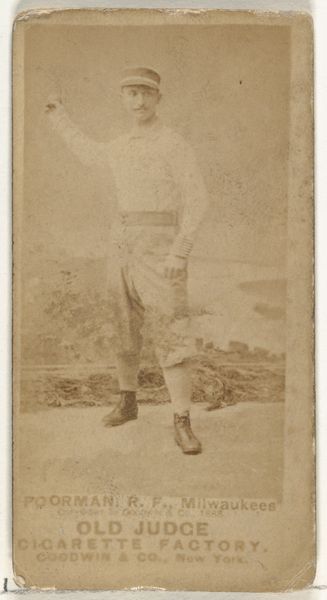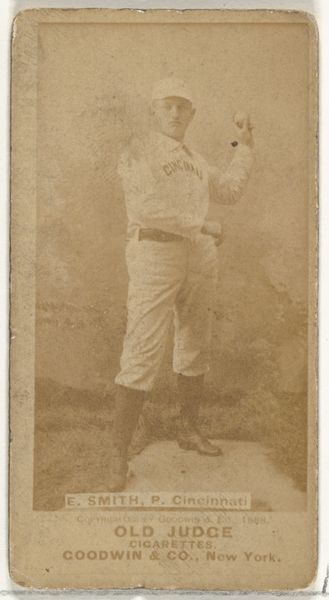
Frank T. Gilmore, Pitcher, Washington Nationals, from the Old Judge series (N172) for Old Judge Cigarettes 1888
0:00
0:00
drawing, print, photography
#
portrait
#
drawing
#
still-life-photography
# print
#
impressionism
#
baseball
#
photography
#
men
#
athlete
Dimensions: sheet: 2 11/16 x 1 3/8 in. (6.9 x 3.5 cm)
Copyright: Public Domain
Curator: This photographic print, dating back to 1888, showcases Frank T. Gilmore, a pitcher for the Washington Nationals. It’s part of the “Old Judge” series (N172) by Goodwin & Company, produced as trade cards for Old Judge Cigarettes. Editor: The sepia tones give it a beautiful antique feel. There’s something incredibly direct about Gilmore’s gaze and the clarity with which the photograph captures him; he's so present even across this immense gulf of time. Curator: Indeed. It’s a fantastic example of how the burgeoning consumer culture embraced celebrity. Tobacco companies used these cards to boost sales, and in doing so, played a huge role in popularizing baseball and its players. Think about how this circulated – inside cigarette packs, small, tangible. It collapses art and advertisement, doesn't it? Editor: Absolutely. It's an advertisement that simultaneously elevated the status of the athlete. I am curious, how these baseball cards reflect the era's consumption habits and advertising techniques. It really brings home the point of art operating within commercial frameworks. Were these cards considered disposable ephemera or valuable keepsakes at the time? I’d assume that influenced their material quality. Curator: They were initially meant as promotional material, easily discarded, but quickly gained value as collectibles. That speaks to their material value, if not initially inherent, constructed quickly through circulation. Also, note how the backdrop has the aesthetic feel of Impressionist landscapes, so then the photograph also brings together multiple visual and material registers. Editor: Right! This wasn't just about showcasing a baseball player, but crafting a desired aspirational lifestyle by incorporating established, and, at that time, highly consumable aesthetic styles. This blend elevates the players from athletes to cultural figures. Curator: Consider, too, the role of Goodwin & Company, mass producing these cards, making celebrity and sports into a widely available commodity. It democratized access, but also transformed people into something akin to brands. Editor: Precisely. Examining the materiality of this simple trade card gives us an intriguing insight into baseball's role in society and evolving advertising strategies of that period. Curator: It is definitely food for thought about how capitalism consumes and constructs image, literally and figuratively. Editor: Exactly, I now see Gilmore not just as an athlete, but as a critical component in a commercial ecosystem that would shape our modern understanding of celebrity.
Comments
No comments
Be the first to comment and join the conversation on the ultimate creative platform.
